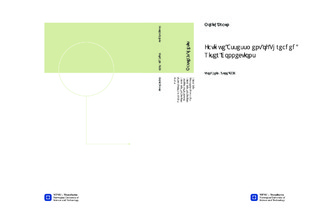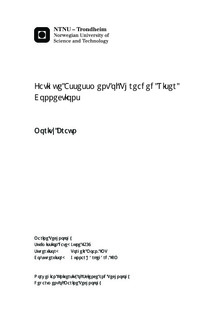| dc.description.abstract | Threaded connections as found in applications like rigid riser, drillstrings, and workover riser are manufactured with sharp notches. Subjected to cyclic loading, those notches lead to high stress concentrations, which increase the risk of fatigue crack initiation significantly. A common connection type that has been the basis for extensive studies is the API Line Pipe connection. The basic API thread type consists of truncated triangular threads. In order to tighten the connection the male and female part or pin and box are assembled by applying a make-up torque. This process already leads to stress in the connection that exceed the material yield strength at the roots of the threads. Subjected to cyclic loading a complex stress state arises at the thread roots of both parts of the connection. From screwed connections it is known that approximately half of the axial load is carried by the last engaged thread. Consequently, fatigue cracks develop at this location. Fatigue assessment of threaded riser connections (TRC) is commonly based on a peak stress approach. This is the prescribed method in standards and recommended practices like DNV-RP-C203, BS 7608 or ASME B31.3. For this purpose, the peak stress at the root of the last engaged thread is found by finite element analysis (FEA). Subsequently, a given design curve is corrected for the notch effect of the thread root and the fatigue life of a connection can be calculated by means of linear damage accumulation. It was shown in different research projects that fatigue assessment of TRC based on this method leads to overly conservative lifetime estimates when combining design curves with FEA. In order to achieve more precise lifetime estimates, alternative fracture mechanics methods based on ASME BPVC VIII-3-App. D have been applied. The intention was to establish stress-life diagrams for design purposes of threaded riser connections based on alternative methods. Moreover, comparison of the chosen approach and test results was included to review the obtained results. It was found that the chosen fracture mechanics methods yield unconservative results, when compared with test data, common stress - life design curves and other methods based on the peak stress approach. | nb_NO |

